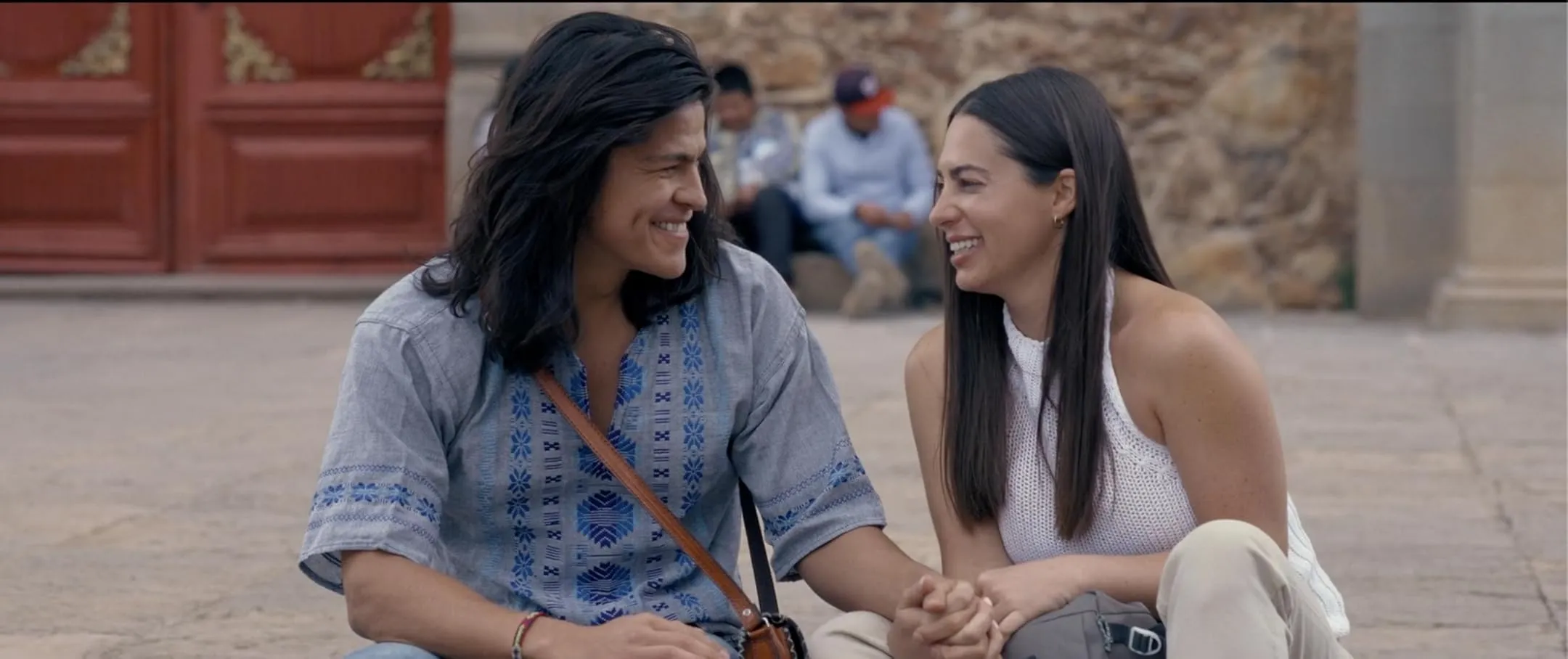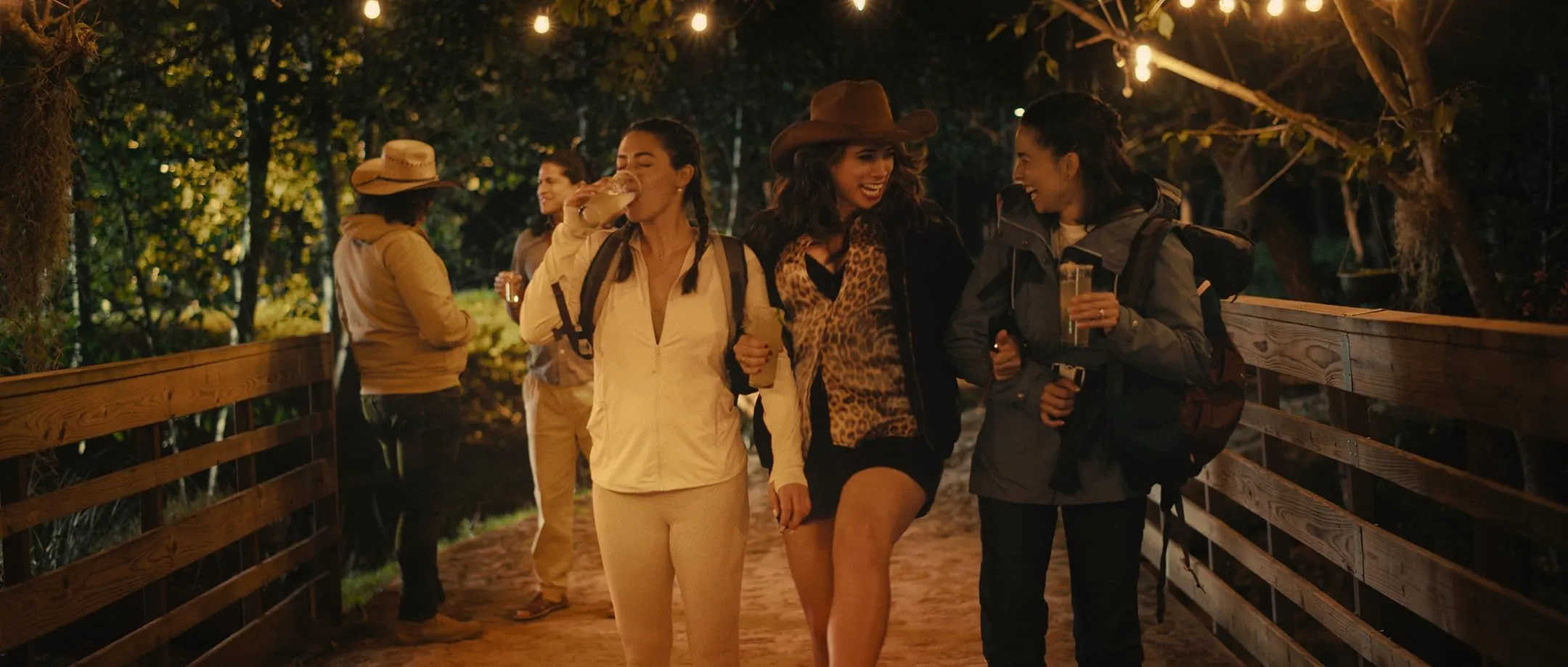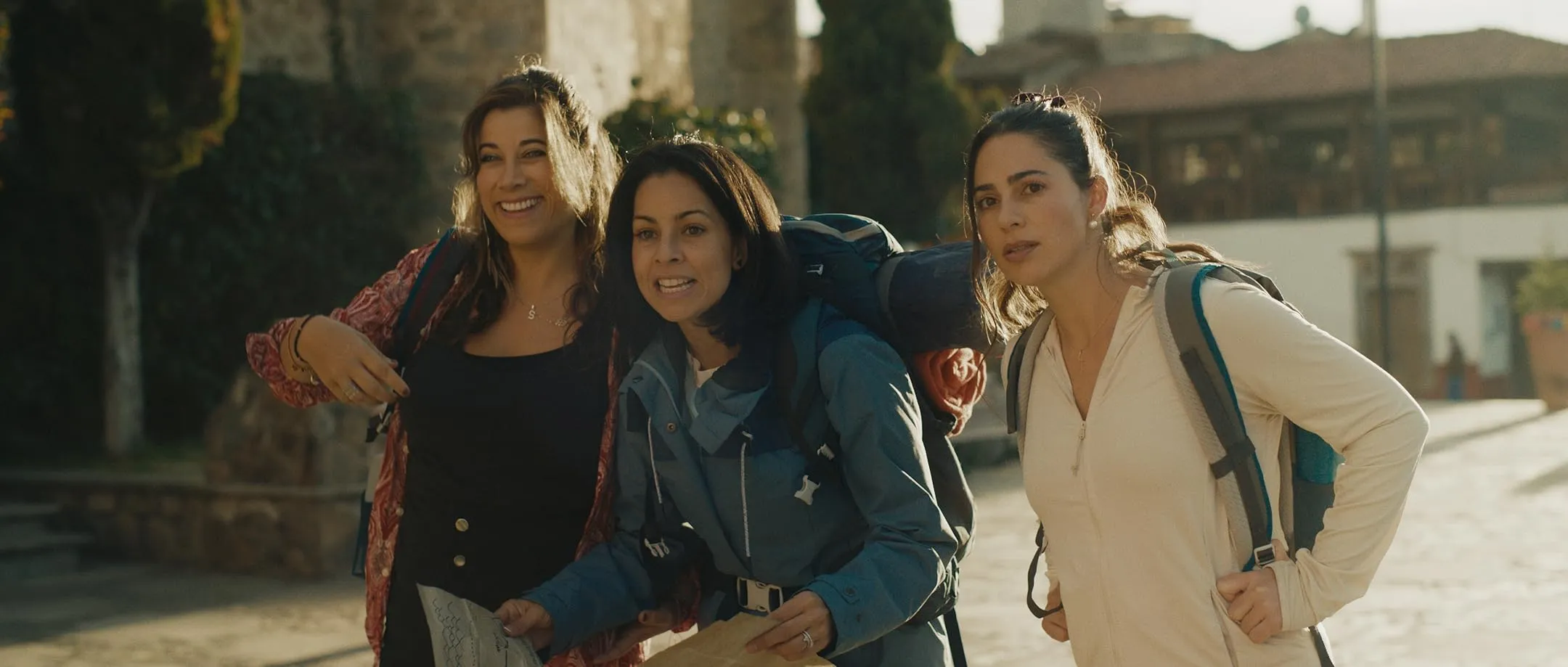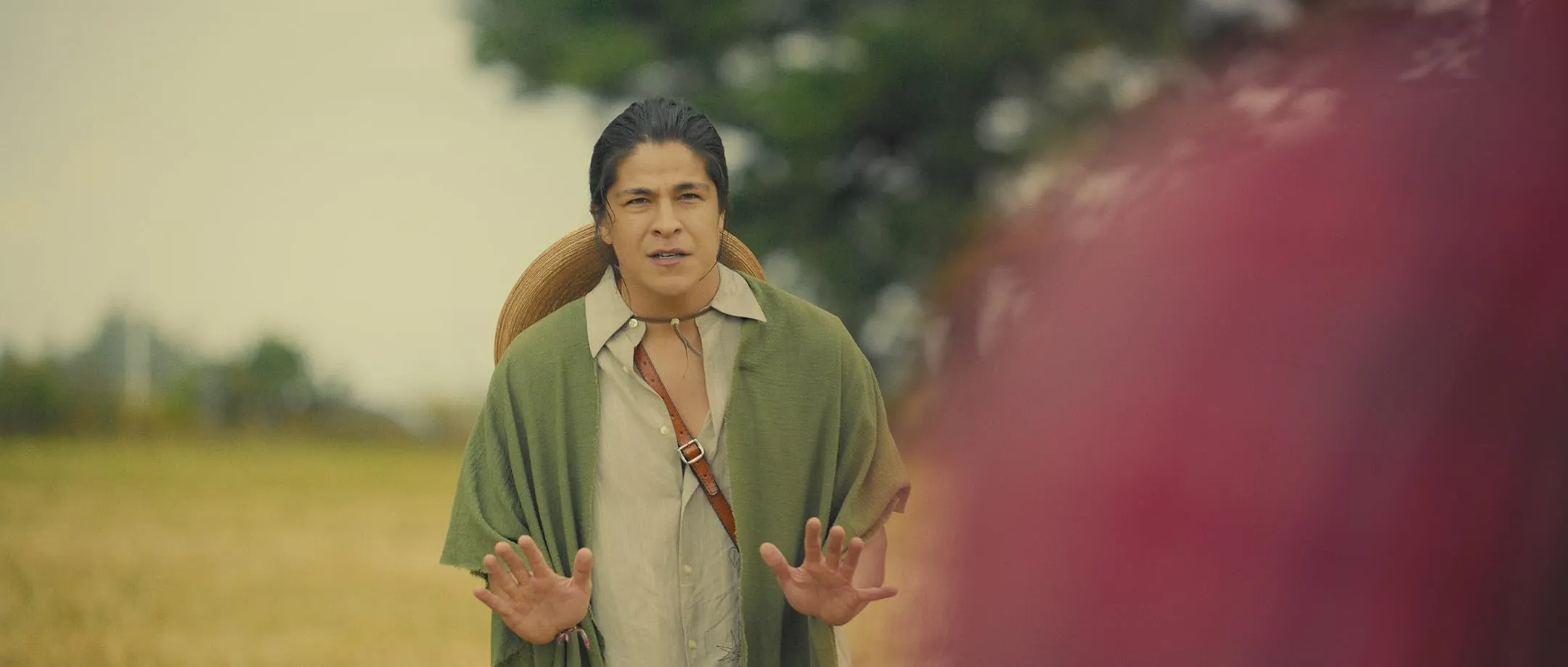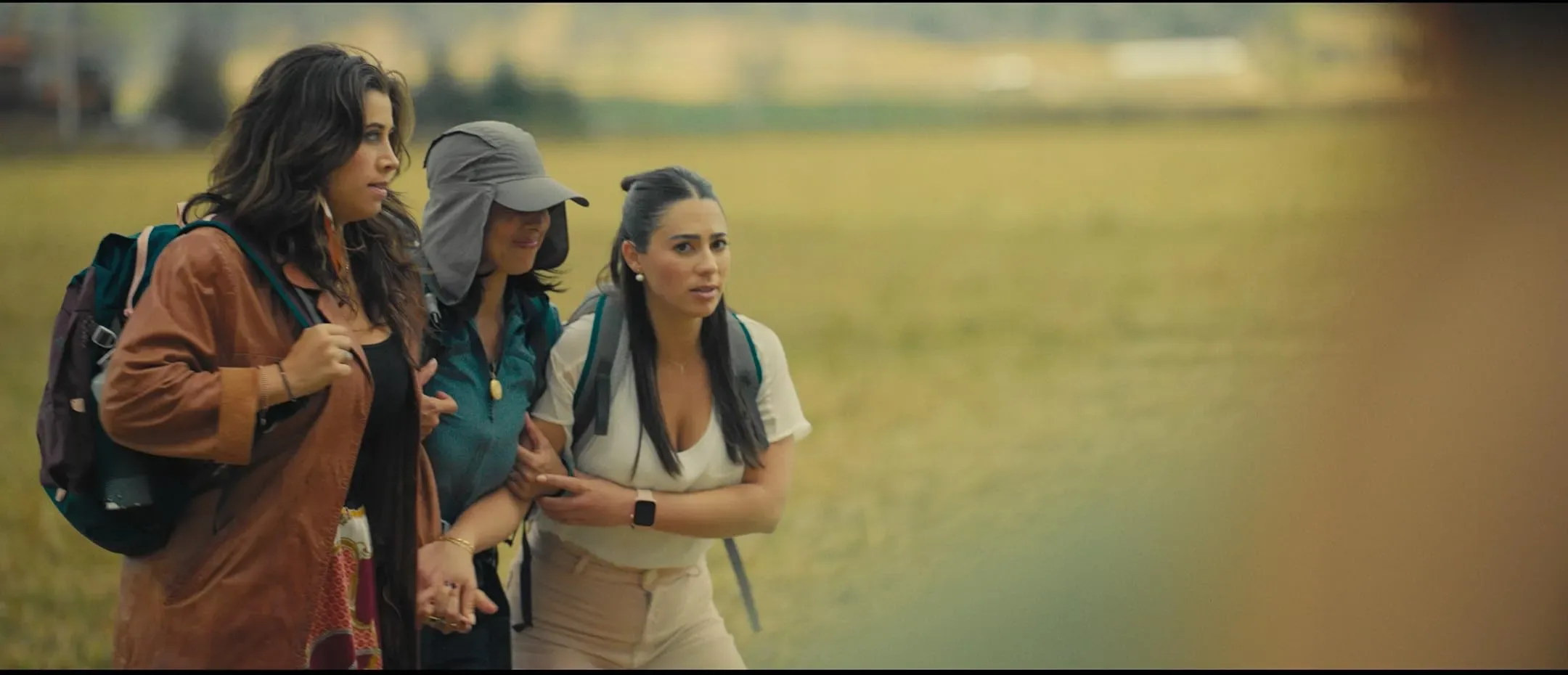Las Tres Sisters opens with Mar Novo’s camera tracing the dusty path to Talpa de Allende, where three Mexican-American sisters—Maria, Sofia and Lucia—converge on a six-day pilgrimage. Maria’s concealed diagnoses—one shared with her devoted husband, another kept from her siblings—set the narrative tension.
Scenes shift between bawdy campfire banter and panoramic vistas, underscoring shifts in mood from intimate revelation to rustic grandeur. Estrangement reverberates in every exchange: childhood bonds fray under the weight of secrets, faith and rivalry.
Mar Novo’s direction recalls the observational style of Indian parallel cinema, evoking Satyajit Ray’s quiet humanism and the road-trip freedom of mainstream Bollywood hits like Zindagi Na Milegi Dobara. The film’s bilingual dialogue mirrors contemporary global cinema’s interest in linguistic authenticity—similar to Deepa Mehta’s portrayal of diaspora in Water.
Cinematographer’s use of warm earth tones evokes symbolic ties to heritage, while editor’s rhythmic cuts echo Mexican folk rituals and highlight cultural textures. Voyages are punctuated by moments of quiet reflection—a choice that recalls the contemplative pause in Ritwik Ghatak’s A River Called Titas. Music weaves folk motifs into an original score that feels both regionally specific and universally emotive. Through cross-cultural lenses, Las Tres Sisters stands as a heartfelt study of sisterhood, faith and belonging.
Mapping the Pilgrimage: Structure and Emotional Beats
The film opens with a prologue in which the sisters’ grandmother (Laura Patalano) recounts the six-day, 135-mile pilgrimage she once made to Talpa de Allende. This bedtime tale establishes a living family myth rich in ritual and symbolism, much like the oral traditions evoked in Satyajit Ray’s narratives. A brief flashback to the three girls clustered around her lantern frames the journey as both an inherited duty and a spiritual test.
A sudden cut propels us into estrangement: the once-inseparable siblings now inhabit Houston, Puerto Vallarta and Los Angeles, each carrying unspoken resentments. Childhood fondness fractures under an unnamed betrayal, creating dramatic tension reminiscent of the sibling dynamics in Mira Nair’s family dramas. Careful cross-cuts emphasize how geography shapes their identities, while maintaining a linked emotional rhythm.
Maria’s hidden illnesses—one kept even from her attentive husband, the other fiercely guarded from her sisters—trigger the reunion. Her decision to fabricate a crisis as pretext echoes the dramatic twists of mainstream Bollywood road films, yet retains the restraint of India’s parallel tradition. Cinematic reveals are paced with gentle dissolves, letting viewers absorb her fear even as the others remain in the dark.
Each day of the trek unfolds with distinctive tonal shifts. Day 1 brings an uneasy reunion under a roadside chapel; old insults surface in clipped exchanges. Mid-journey scenes shift to lantern-lit campfires where bawdy humor yields to cathartic confession—editing here adopts the freewheeling cut style of Western indie road pictures.
On the penultimate day, a medical collapse propels the sisters to the brink of breakdown, captured in close-ups that linger on trembling hands. The final day’s dawn dissolves into an emotional crescendo as Maria’s secret emerges and faith meets reality in a quietly powerful miracle sequence.
In the resolution, Novo lets the sisters linger at the shrine steps, their post-pilgrimage embrace implying a new balance forged through shared ordeal. No grand pronouncements are needed—their tentative smiles and shared silence speak volumes.
Sisters in Shadows and Light
María (Marta Méndez Cross) carries the film’s emotional weight with a poised grace familiar to fans of Smita Patil’s restrained performances in parallel cinema. As a Houston homemaker devoted to her husband Harold, she conceals two medical truths—one kept from her spouse, the other from her sisters.
Méndez Cross balances quiet resolve with fleeting tremors of fear, her eyes conveying hope and dread in equal measure. When María tentatively reaches for her sisters’ hands at a roadside chapel, the camera lingers on her measured breath, underscoring a vulnerability that anchors the story.
Sofía (Virginia Novello) bursts onto the screen like the rebellious heroines of Bollywood’s new-wave dramas. A bachelorette in Puerto Vallarta, she alternates bawdy laughter with moments of unexpected gravity. Her frank conversation about sexuality—delivered in both English and Spanish—echoes the bilingual authenticity seen in modern diasporic films. Novello’s comic timing shines in scenes where she negotiates with a local sex worker, yet she slips seamlessly into moments of raw confession around the campfire. This duality—a free spirit masking deep-seated loneliness—gives her arc emotional weight.
Lucía (Valeria Maldonado) embodies the tension of duty: a Los Angeles attorney and sole caregiver to her disabled mother. Maldonado’s performance recalls the controlled intensity of Shabana Azmi in family dramas. She maintains an almost formal composure at first, then allows cracks to form when past grievances resurface. In scenes where she silently tends to her mother’s wheelchair, her restraint speaks volumes about resentment and longing. A single tear tracing down her cheek captures a world of unspoken sacrifice.
Supporting players enrich the tapestry. Kin (Cristo Fernández), the introverted botanist, offers quiet companionship to Lucía; his gentle curiosity mirrors the botanical symbolism in global arthouse trends. Manuel (Gonzalo García Vivanco), an extroverted rancher, forms a playful, lusty rapport with Sofía that feels lifted from road-trip rom-coms. Even the grandmother’s voice (Laura Patalano) lingers as an ethereal presence, her prologue framing the sisters’ quest.
Chemistry among the leads arises from shared gestures—twin laughs, abrupt silences, sisterly jostles—that evolve from stiff politeness in the early trek to unguarded embraces at the shrine. Through subtle looks and overlapping dialogue, the three actresses map a believable history, transforming estrangement into intimacy one step at a time.
Echoes of Ritual and Renewal
The pilgrimage through Mexico’s heart serves as a living metaphor for healing fractured bonds. Each sister carries hidden wounds: María’s concealed diagnoses, Sofía’s coping with addiction, Lucía’s buried resentments. The long trek forces them into shared hardship, transforming old grievances into moments of empathy. Secrets have kept them apart, yet confession around the campfire becomes the first step toward trust.
Faith threads through the film without feeling preachy. Rituals—prayer, roadside offerings, shared hymns—unfold with gentle realism rather than sermonizing speeches. Miracles arrive both literally, in María’s moment of grace at the shrine, and emotionally, when a silent glance between sisters speaks louder than any divine intervention. This dual approach recalls the subtle spirituality found in Indian parallel cinema, where belief operates on a human scale.
Cultural identity emerges through the seamless shift between English and Spanish, reflecting the sisters’ bicultural reality. The rural landscape stands almost as a silent character: dusty trails, adobe chapels and local vendors paint a vivid backdrop that grounds the story in place. In global cinema, similar approaches appear in films like Mira Nair’s The Namesake, where setting shapes identity as much as language.
Mortality looms over every scene. María’s illness casts a shadow that quickens each decision, lending urgency to small acts—a shared glass of water, a gentle hand on a shoulder. Time pressure fuels raw honesty during key encounters, echoing the emotional stakes of films such as Piku, where personal health becomes a catalyst for family reckoning. Here, every sunrise brings another chance for the sisters to salvage what remains of their bond.
Frames of Faith: Visual Tapestry on the Pilgrimage
Mar Novo’s camera adopts a pilgrim’s gaze, favoring wide-angle compositions that track the sisters as they traverse arid plains and mountain passes. These expansive vistas recall the location-driven grandeur of Bollywood road dramas like Zindagi Na Milegi Dobara, where landscapes mirror inner transformation. Dawn and dusk scenes are bathed in ochre and terracotta, each sunrise promising renewal while each sunset underscores the day’s emotional residue.
Production design anchors the film in lived-in authenticity. Hand-painted roadside chapels crowd the frame with devotional offerings, while market stalls brim with woven textiles and ceramic votives. Costumes shift subtly: the sisters’ casual T-shirts and jeans give way to embroidered shawls and beaded rosaries when they pause at village shrines. This attention to detail mirrors the cultural verisimilitude prized by India’s parallel cinema movements, where texture replaces spectacle.
Editing charts the pilgrimage’s tempo through rhythmic montages. Montage sequences splice sunrise prayers, shared meals and blistered feet into a unified beat, offering breathing room between dialogue-heavy interludes. When conversation halts—after a confession or near-breakdown—the cut to an empty trail or flickering candle amplifies the unspoken. This interplay between spoken word and visual pause calls to mind the pacing of Satyajit Ray’s Apu Trilogy, where silent observation conveys deep feeling.
Directorial choices emphasize the sisterly bond at the frame’s heart. Group shots often position María, Sofía and Lucía in a tight triangle, their shifting proximity reflecting evolving trust. In moments of crisis, Novo holds the lens on a single sister while the others blur in the background, capturing isolation amid company. These framing shifts serve as emotional punctuation, reminding viewers that every physical step on this dusty road carries unseen weight.
Echoes on the Trail: Soundscapes and Score
“Las Tres Sisters” uses music and ambient sound to mirror each sister’s inner landscape. Traditional Mexican folk instruments—jarana guitar, vihuela and soft accordion—thread through an original theme that adjusts to emotional shifts.
When María hesitates at the roadside chapel, a plaintive jarana motif underscores her fear; Sofía’s campfire scenes burst with lively accordion notes that bend into uneasy silence as old tensions surface; Lucía’s moments of quiet care are accompanied by low-register harp glissandos hinting at longing.
Beyond melody, live recordings of rustling leaves, scuffed footsteps and campfire crackle ground the narrative in place, underpinned by precise mixing that balances field recordings and score. Editor’s choice to let these natural sounds linger before dialogue creates breathing space for revelation.
Strategic pauses—when neither instrument nor ambient noise intrudes—heighten the impact of María’s medical crises and late-night confessions. In unspoken resonance, sound design becomes a fourth sister, guiding viewers through ritual, conflict and reconciliation.
Laughter, Tears, and the Sacred
The film shifts fluidly between bawdy humor and poignant heartbreak. Scenes of candid toilet-humor—Sofía’s irreverent jokes around the campfire—offer moments of levity that echo the comic relief in Indian dramas like Masaan, where dark themes rest on human wit.
In contrast, Lucía’s quiet mother-daughter exchanges by a nighttime shrine pierce the heart, each whispered apology carrying real weight. When the sisters finally confess buried truths under embers, camera and sound fall away to spotlight their raw emotion—a device familiar from Bollywood’s slice-of-life narratives such as The Lunchbox.
The pilgrimage’s climactic miracle sequence heightens this tension, its hushed framing inviting viewers to share the characters’ wonder. By weaving humor with grit, Mar Novo ensures the renewed bond lingers in memory as a vivid sign of faith’s fragile power and family’s enduring hold.
Full Credits
Director: Mar Novo
Writers: Marta Méndez Cross, Youssef Delara, Valeria Maldonado, Virginia Novello
Producers: Marta Méndez Cross, Valeria Maldonado, Virginia Novello, Denisse Prieto, Ruiz de Velasco Gonzalo, Mar Novo
Executive Producers: Cristo Fernández, Kip Kroeger, Ian Martin, Daniela Salgado Vizcaino
Cast: Marta Méndez Cross (Maria), Valeria Maldonado (Lucia), Virginia Novello (Sofia), Cristo Fernández (Kin), Maya Zapata (Teresa), Adam Mayfield (Harold), Gonzalo García Vivanco (Manuel), Laura Patalano (Abuelita), Ignacio Riva Palacio (Lenny), Pilar Ixquic Mata (Paty), Denisse Prieto (Dr. Novello), Eduardo Villalpando (Posada Owner), Ana Aldana (Vita), Mariela Corona (Young Lucia), Alejandro González (Drunk Man), Ximena Visella López (Angela)
Director of Photography (Cinematographer): Ivahn Aguilar Naim
Editor: Youssef Delara
Composer: Ryan Cross
The Review
Las Tres Sisters
Las Tres Sisters captures the bonds of sisterhood through authentic performances, evocative visuals, balanced humor and pathos. Mar Novo’s film delivers a heartfelt exploration of faith, cultural identity and familial redemption, anchored by compelling leads and a richly textured soundscape. The final pilgrimage leaves a lingering warmth, inviting viewers to reflect on love, loss and the promise of forgiveness.
PROS
- Raw performances anchor emotional depth
- Cinematic depiction of the pilgrimage route
- Humor woven into dramatic moments
- Rich soundscape heightens atmosphere
- Cultural authenticity in language and setting
CONS
- Key plot turns occasionally predictable
- Mid-arc pace can lag
- Hallucinogenic side-trip feels extraneous









































